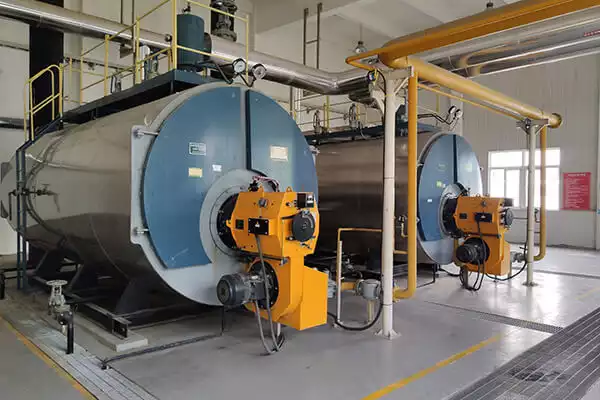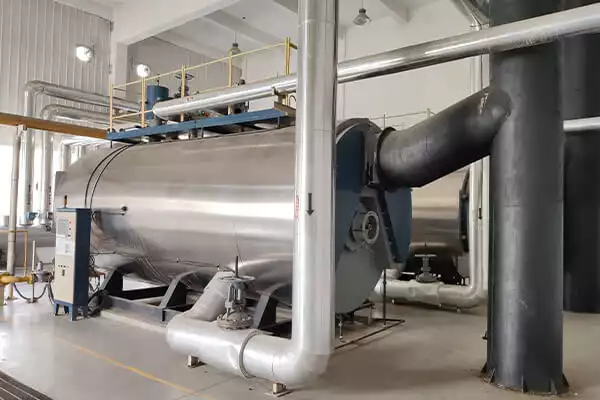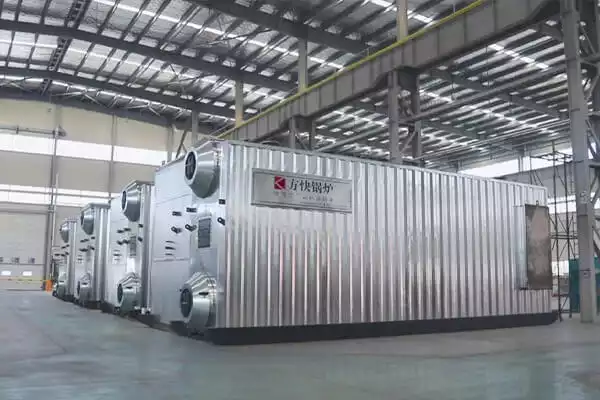
Precios de calderas de gasóleo en 2022 | The Compelete Guide
The price of an oil heating boiler is about $2,800-$6,700. Un oil heating boiler is a vital part of any building. It converts the oil into heat, which can be used to warm up your house or office. In this guide, you will be able to learn more about oil-fired heating boilers. So that you can make a more reasonable choice.
Is it worth getting a heating oil boiler?
best oil heating boiler
Is it worth getting an oil heating boiler? Sí! Here’s why:
- Oil is more expensive than gas. You can expect to pay between $0.06 and $0.08/liter for oil, which is significantly higher than the $0.05-$0.07/liter you’d pay for gas. If you’re heating your home with electricity or GLP (gas de petróleo licuado), then that price difference may not matter too much to you—but if you have a large property and want to find out how much money an oil boiler might save over time, check out this calculator from our friends at Energy Saving Trust!
- Oil boilers are much more efficient than gas boilers and lead to lower heating bills in cold weather thanks to their high-efficiency rating (80%+). This means that even though oil boilers tend to cost more upfront, they’ll also save money on fuel costs every month over the course of their life because they need less energy overall when compared with other types of heating systems such as electric heat pump units installed inside attics where temperatures vary depending on outdoor temperatures during different seasons.
Obtenga un precio fijo en línea en 20 segundos:
ventajas & Contras.
ventajas:
- Efficient: Modern oil heating systems are highly efficient, with high energy content in each gallon of oil. They can provide consistent and reliable heat, quickly warming up a space.
- Cost Stability: Oil prices tend to be more stable compared to other fuel sources, such as natural gas or propane. While prices can fluctuate, they generally do not experience the same volatility as other energy sources.
- Availability: Oil is widely available in many regions, making it accessible for heating purposes. Delivery can be scheduled regularly to ensure a constant supply.
- Heat Output: Oil heat produces high heat output, making it effective for heating larger spaces or homes located in colder climates.
- Longevity: Oil heating systems, when properly maintained, can have a long lifespan. With regular servicing and care, they can provide reliable heat for many years.
Contras:
- Impacto medioambiental: Oil heat contributes to carbon emissions and air pollution. Burning oil releases carbon dioxide (CO2), sulfur dioxide (SO2), and nitrogen oxide (NOx), which are greenhouse gases and pollutants that can negatively impact air quality and contribute to climate change.
- Storage Space: Oil heating systems require an on-site storage tank to hold the oil. This requires dedicated space on the property, either above-ground or underground.
- Fuel Delivery: Unlike natural gas or electricity, oil heat requires regular fuel deliveries to maintain a supply. Homeowners must ensure they monitor their oil levels and schedule deliveries in a timely manner to avoid running out.
- Mantenimiento: Oil heating systems require regular maintenance to ensure proper functioning. This includes annual servicing to clean and inspect the system, as well as occasional filter changes and nozzle cleaning.
- Potential Spills: The storage and handling of oil come with the risk of spills or leaks, which can be environmentally hazardous and costly to clean up. Proper installation, maintenance, and inspection can help mitigate this risk.
- Carbon Footprint: As mentioned earlier, oil heat has a higher carbon footprint compared to some other heating options, such as natural gas or renewable energy sources like solar or geothermal heating.
Instalación.
- Design and planning: Determine the appropriate size and capacity of the boiler based on the heating needs of your space. Consider factors such as square footage, insulation, and climate. Consult with a heating professional to select the right boiler model and design the system layout.
- Obtain necessary permits: Check with your local building authority to determine if any permits are required for the installation of an oil boiler heating system. Obtain the necessary permits before starting the installation process.
- Choose a suitable location: Select a location for the boiler that meets the manufacturer’s guidelines and local building codes. The area should have proper ventilation, adequate clearance for maintenance, and be easily accessible for fuel oil delivery and service.
- Install the fuel storage tank: If you don’t already have an oil storage tank, you’ll need to install one before the boiler installation. The tank should comply with local regulations and be located in a suitable area, such as a basement, utility room, or outdoors. Follow the manufacturer’s instructions for proper installation and connection to the oil supply lines.
- Prepare the installation area: Clear the area where the boiler will be installed and ensure there is sufficient space for the boiler, fuel lines, venting system, and access for maintenance. Install any necessary support or mounting brackets as specified by the manufacturer.
- Install the boiler: Carefully follow the manufacturer’s instructions for installing the oil boiler. This includes connecting the supply and return pipes, electrical connections, and control wiring. Ensure that all connections are secure and properly sealed to prevent leaks.
- Connect the fuel oil supply lines: Install the fuel oil supply lines from the storage tank to the boiler. Use the appropriate materials, such as steel or copper pipes, and install shut-off valves and filters as required. Ensure proper alignment and secure connections to avoid leaks.
- Install the venting system: Determine the appropriate venting system based on the boiler model and local regulations. It may involve installing a chimney or vent pipe system to exhaust combustion gases. Follow the manufacturer’s guidelines and local codes to ensure safe and effective venting.
- Electrical connections: Connect the electrical wiring according to the manufacturer’s instructions and local electrical codes. This includes connecting power to the boiler, thermostat, and any additional controls or accessories.
- Test and commission the system: Once the installation is complete, the system should be thoroughly tested for proper operation and safety. This includes checking for fuel leaks, verifying proper combustion, adjusting settings, and ensuring the system is functioning according to specifications. Follow the manufacturer’s instructions and any local regulations for commissioning the boiler heating system.
Necesito una nueva caldera?
How to bleed oil heating boiler?
oil boiler heater
Bleeding an oil heating boiler is a process of removing air from the system by opening a bleed valve and allowing it to escape. This can be done with or without the use of pressure gauges, which are helpful in determining whether air has been completely removed from the system.
Primero, remove all power from your oil heating boiler by switching off its circuit breaker if possible.
- Open up your bleed valve slowly; doing so too quickly may cause oil to escape through it and cause damage to surrounding components. Allow any escaping liquid to drain down into a container for later disposal. * Close the bleed valve when you are finished bleeding out any excess liquid in order not to allow more than necessary into your system’s pipes.
Is oil heating cheaper than gas?
heating oil boiler
There are several factors that determine the cost of heating your home, but it’s important to note that the type of fuel you use can have a significant impact on your monthly expenses. If you’re considering switching from gas heating to oil heating, or vice versa, keep in mind that there are some advantages and disadvantages to each type of energy source.
Oil is cheaper than natural gas. Oil is less expensive than natural gas or propano because it’s not as widely used as these other fuels and producers must compete with each other for market share. Because oil is abundant in many parts of the country (including North America), Además, since oil doesn’t need special processing before being sold—unlike propane—the supply chain isn’t as complex either; which may translate into savings downline since fewer people involved means less overhead costs passed onto consumers.”
Obtenga cotizaciones de calderas GRATIS
- ✔Obtenga cotizaciones de calderas locales GRATIS hoy
- ✔Compara Los Mejores Precios
- ✔Ahorre dinero en su nueva caldera hoy!
How much does it cost to install an oil heating boiler?
oil heating boiler prices
The cost of installing an oil heating boiler depends on the size of the boiler and where it is installed. The average cost is around $2,800 – $6,700 but this can vary depending on many factors, incluido:
- The size of your new oil boiler. The larger the system, the more expensive it will be to install.
- Your location. If you live in a rural area or remote location that requires longer travel distances, this may affect how much you pay for installation work because there will be higher fuel costs involved with transporting materials and staff to your home or building site.
Conclusión
An oil heating boiler is a device that will heat your home or business with warm water. They are made up of different types of materials and can be used to heat water quickly or slowly depending on their efficiency level. There are many different types of boilers available. If you want to know more about oil heating boilers, por favor contáctenos: a +0086 186-2391-5479.

Buscando calderas con fabricación sofisticada, gran calidad?
La caldera Fangkuai siempre puede proporcionar lo que desea.
Get your best price
Quickly compare 3 FREE quotes
- Engineer quick quote
- The overall delivery speed is fast
- Financial choice
- Low installation costs and cost savings
25 years+ of boiler R&D
Más que 20 innovative technologies



